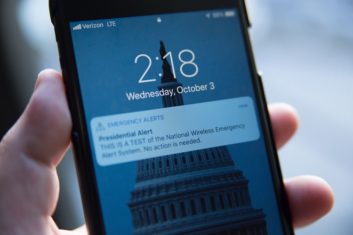
Local tests of Wireless Emergency Alerts will be held in September.
The FCC says it is working with several dozen state and local government agencies to assess the tests’ accuracy, and it is asking wireless providers to provide information on their performance.
Chairwoman Jessica Rosenworcel said in a statement, “Wireless Emergency Alerts are a life-saving tool, but emergency managers tell us that they need more information on the geographic accuracy of these alerts in order to use them with confidence.”
She said safety officials want to know that alerts will reliably reach the public “throughout — but not beyond — targeted areas during emergencies.” The tests are intended to assess geographic accuracy, reliability and speed.
For the tests on Sept. 12 and 13, each state and local agency partner will send a Wireless Emergency Alert to the public in a targeted local area that it selects.
[The list of test partners can be found on page 6 of the FCC order, and includes target test areas and test dates and times.]
The alert will sound and appear on compatible mobile devices using participating wireless networks in that area.
“The alert message will make clear that it is only a test and contain a link for the recipient to complete a survey about their receipt of the alert,” the FCC stated.
“Each agency will have a control group of volunteers in the targeted geographic area complete the survey, and members of the public may also do so.”
Authorities send WEA alerts through FEMA’s Integrated Public Alert and Warning System to wireless providers, which push them on to compatible mobile devices. The FCC says participation by wireless providers is “voluntary but widespread.” Those providers must deliver the alerts to the area specified by the originator with no more than a 1/10 of a mile overshoot where technically feasible.
“According to industry estimates, approximately 60 percent of active smartphones in the U.S. support this ‘enhanced geotargeting’ functionality, with the number to increase as consumers replace their devices with newer models,” the FCC stated.
This is part of ongoing efforts by the FCC to improve WEA and EAS systems. In 2021 the commission worked with 11 agencies to assess the delivery of WEAs during a nationwide test.











